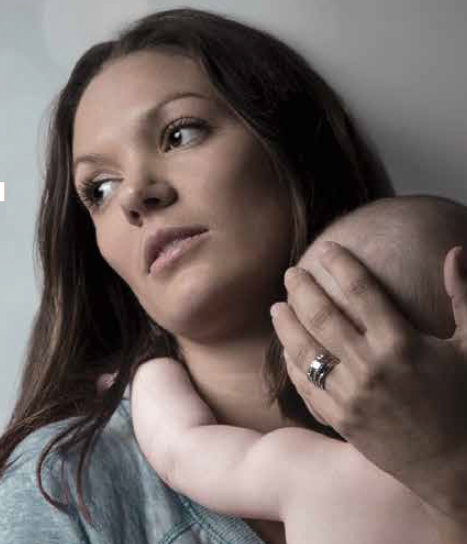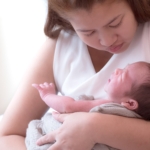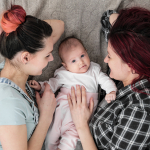In 2015, we first reported on SAGE-547 (SAGE Therapeutics), a new medication for the treatment of severe postpartum depression (PPD). SAGE-547, now called brexanolone, is an allosteric modulator of GABA-A receptors. We saw the preliminary results of the Sage Therapeutics Phase 3 Hummingbird Program earlier this year. Now we have the final set of results to consider.
Participants were between the ages of 18 and 45 years and were less than 6 months postpartum at the time of screening. Participants were eligible for the study if they experienced an episode of major depression no earlier than the third trimester of pregnancy and no later than four weeks postpartum. Women with a history of schizophrenia, bipolar disorder, or schizoaffective disorder were excluded.
These women took part in two double-blind, randomized, placebo-controlled, phase 3 trials, at 30 clinical research centers and specialized psychiatric units in the United States. Depression severity was assessed using the 17-item Hamilton Rating Scale for Depression (HAM-D) score (? 26 in study 1 for severe depression and 20–25 in study 2 for moderate depression). HAM-D total scores were assessed multiple times during the infusion, at 60 hours, and after discharge on days 7 and 30.
Brexanolone for Severe PPD (Study 1)
Women with severe PPD had baseline HAM-D scores above 25. These participants were randomly assigned in a 1:1:1 ratio to receive a 60-hour infusion of brexanolone 60 µg/kg/hr (BRX60, n = 47), brexanolone 90 µg/kg/hr (BRX90, n = 45), or placebo (n = 46).
In the lower-dose group (BRX60), women receiving brexanolone had a greater reduction in HAM-D scores than those in the placebo group (mean -19.9 points vs -14.0 points; P < .05). Women in the higher-dose group (BRX90) also had a greater (but less robust) reduction in HAM-D scores (-17.7 points vs. -14.0 points).
HAM-D total scores were also examined for remission (HAM-D total score ?7) and response (reduction in HAM-D total score ? 50%). Between 24 hours and 72 hours and at day 30, the proportions of patients achieving remission were higher for both the BRX60 and BRX90 groups compared to placebo. However, this finding was statistically significant at some, but not all, timepoints. The proportion of patients who achieved a HAM-D response was similar for both brexanolone groups between 24 hours and day 30.
Brexanolone for Moderate PPD (Study 2)
Women with moderate PPD had baseline HAM-D scores between 20 and 25. The women were randomly assigned to receive either a 60-hour infusion of brexanolone 90 µg/kg/hr (n = 54) or placebo (n = 54).
Women receiving BRX90 had a greater reduction in HAM-D scores from baseline to hour 60 as compared to women receiving placebo (mean -14.6 points vs -12.1 points; P < .05). Women in the brexanolone group continued to have lower HAM-D scores at 72 hours (P < .01) and on day 7 (P < .05).
In study 2, the proportion of patients achieving HAM-D remission was higher for the BRX90 group (61%) than the placebo (38%) at all timepoints between 8 hours and day 7, reaching statistical significance at multiple timepoints. The proportion of patients achieving a HAM-D response was also higher in the BRX90 group compared with placebo between 24 hours and day 7.
Tolerability of Brexanolone
The proportion of patients who reported at least one adverse event was similar between groups: 50% in the placebo group and 50% of the patients in the brexanolone groups. The most common adverse events in the brexanolone groups were headache, dizziness, and somnolence. Most were mild and occurred during the first 24 hours of infusion.
In study 1, one patient in the BRX60 group had two serious adverse events (suicidal ideation and intentional overdose). In study 2, one patient in the BRX90 group had two serious adverse events (altered state of consciousness and syncope), which were considered to be treatment related
iS Brexanolone a Viable Option for Women with PPD?
Brexanolone represents a novel approach to the treatment of postpartum mood disorders. At this point, we do not know exactly how brexanolone exerts its effects. The majority of the patients in this study did not take antidepressants during the course of the study, suggesting that brexanolone has its own antidepressant effects and is not acting solely as an adjunctive therapy for postpartum depression.
One of the most exciting things about brexanolone is the rapidity of the response, within a few days. Because antidepressants typically take at least 2-4 weeks, and sometimes longer, to kick in, an antidepressant agent with rapid onset of action would be particularly appealing to women with severe PPD, particularly women with suicidality.
What is somewhat disappointing is that the results from the phase 3 trials were less impressive than those seen in the phase 2 trial. In that smaller study, participants receiving brexanolone (n=10) experienced a 19.0 point mean reduction in HAM-D scores, compared to 8.4 points in the placebo group (n=11). Seven of the ten participants receiving brexanolone achieved remission from depression (as defined as a HAM-D score of < 7), only 1 of the 11 placebo patients experienced remission.
In the phase 3 trials, brexanolone was more effective than placebo, but the difference was much less dramatic. In women with moderate PPD, the difference was only around 2 points (-14.2 vs. -12.0 points) between active treatment and placebo. The magnitude of the reduction was greater in the women with severe PPD (-19.9 vs. -14.0 points). Placebo responses were much higher in this phase 3 trial which makes the findings look less robust. Although the smaller phase 2 study yielded somewhat different results, it should be noted that randomized controlled trials of conventional antidepressants usually have high placebo response rates, and the difference between placebo and active drug tends to be smaller in patients with less severe illness.
We are eager to find out more about the duration of this response. Will a brexanolone infusion result in remission or will the woman require subsequent infusions to avoid relapse? In this study, patients were followed out for about a month after the cessation of treatment. Of the patients who had a positive response to brexanolone at 60 hours, 94% did not relapse at day 30. Although relapse rates were low, it appears that in the group with moderate PPD, there was no difference between treatment and placebo after 30 days (in terms of HAM-D scores).
We also look forward to getting more information regarding brexanolone in breast milk. (Breastfeeding women included in the brexanolone studies did not breastfeed while receiving treatment.)
One of the obvious downsides of brexanolone is that it must be given intravenously and thus may require inpatient hospitalization in order to administer. Although this might seem like an obstacle, I suspect that many women with severe PPD would easily sign on for this type of treatment if they had a significant chance of improving within a few days. We could also argue that being in the hospital, even for a few days, might be beneficial, in that it could provide some respite from the demands of caring for a newborn. However, this will significantly increase the cost of treatment.
Sage Therapeutics is also moving forward with the development of a similar compound (SAGE-217) which is intended for once-daily oral dosing. In an open trial of patients with major (non-postpartum) depression, it appears that SAGE-217 was effective and well-tolerated. We look forward to hearing more about these novel treatments for PPD.
Ruta Nonacs, MD PhD
Meltzer-Brody S, Colquhoun H, Riesenberg R, Epperson CN, et al. Brexanolone injection in post-partum depression: two multicentre, double-blind, randomised, placebo-controlled, phase 3 trials. Lancet Sept 2018.







Leave A Comment